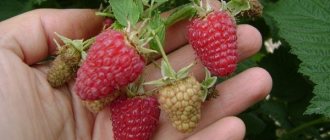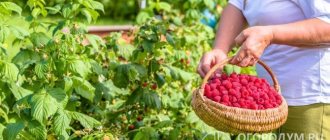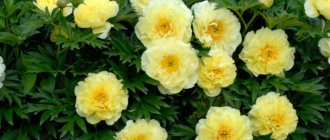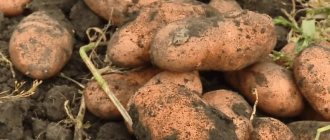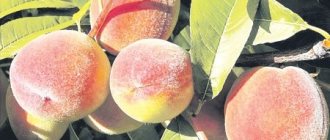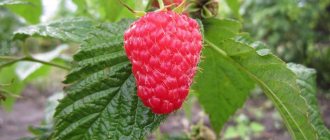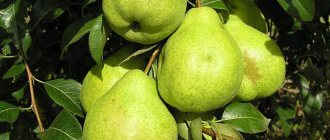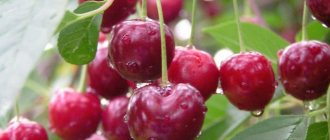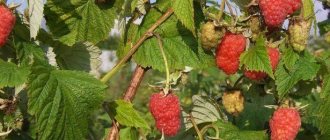- 6.1 Cuttings
Raspberries have been grown for a long time. People are attracted not only by the taste, but also by the beneficial properties of the berries, leaves and twigs of the plant. Breeders from many countries, including Russia, pay great attention to this shrub. Every year new raspberry varieties appear with improved biological and taste properties.
Raspberry Gusar is the creation of domestic breeders from the Bryansk region. Despite the fact that the variety is relatively young, it has many fans among gardeners. Why exactly the berries of this variety are loved, the features of growing and caring for the plant - all this will be discussed in the article.
A little history
Gardeners learned about the breeder Ivan Vasilyevich Kazakov almost half a century ago. It was he who was one of the first to engage in domestic remontant raspberries. His collection contains many varieties that are in many ways superior to other plants in terms of large fruit size and resistance to raspberry diseases and pests.
The varieties of the collection are often called “Kazak’s”. This breeder's remontant raspberries are grown not only in Russian spaces. Gardeners of the former republics of the Soviet Union are also not averse to getting seedlings of the popular raspberry.
Preference is given to many varieties, but most often they pay attention to remontant raspberries:
- Indian summer;
- Penguin;
- Runaway:
- Balm;
- Shy.
Video about Kazakov varieties:
Remontant raspberry Gusar (the name alone is worth it!) is the most in demand today. We started cultivating Gussar in 1999. This is truly a “golden variety”, distinguished by its unpretentiousness.
Kazakov managed to develop a variety that is not affected by many raspberry diseases. I took the best Russian raspberries and the American variety Canby as a basis. As a result of cross-pollination, the variety Gusar was obtained, the qualities of which are superior to its “parents”.
Origin and growing regions
The variety was bred by specialists from the All-Russian Selection and Technological Institute of Horticulture and Nursery Science (VSTISP) and patented. Included in the State Register in 1999. It is recommended for cultivation in the North-Western, Central, Volga-Vyatka, North Caucasus and Middle Volga regions, but is suitable for cultivation throughout almost the entire country, in Belarus, and Ukraine.
The main advantages of the variety are considered to be high yield and excellent consumer qualities of the berries.
Description
Much about Gusar raspberries can be learned from the description of the variety and reviews from amateur gardeners.
- The shrub grows up to 2.7 meters. The shoots are brown, erect, spreading bush. Powerful shoots with a waxy coating without pubescence do not need to be supported in the second year if their height is less than 180 cm.
- The root system does not form many roots. Therefore, a large number of root shoots are not formed, most often from 8 to 10.
- There are few thorns, they are mainly located on the Gusar raspberry in the lower part. The spines are purple and quite sharp.
- The leaves are dark green with wavy edges. The wrinkled leaves are not curled and do not droop downwards.
- Large berries of rich red color, dark ruby when fully ripe. They stand out for their unusual shape: the berry is long and the tip is blunt. The weight of the sweet and sour berry is up to 4 grams. The pulp is dense, the berries practically do not fall off.
- Not subject to rotting. They are distinguished by their aroma and unsurpassed taste.
Brief description of the variety in the photo.
Important! Gusar raspberries can be grown in any region of Russia.
Advantages of the variety
The remontant raspberry variety Gusar has a medium-early ripening period and is rightfully considered one of the best berry bushes.
What are its advantages:
- Unpretentiousness. No special knowledge is required to get a rich harvest. Even beginners can do this.
- The variety is productive. If you follow agrotechnical standards, one bush can ripen up to 6 kg of aromatic berries. Under favorable conditions, you can harvest up to 120 kg per hundred square meters.
- Malina Gusar manages to reach technical maturity in any region of Russia, even under unfavorable climatic conditions.
- A universal-purpose variety, suitable for preparing raspberry compotes, preserves, and jams.
- Due to its excellent presentation and the ability to be transported over any distance without much loss, this remontant variety is grown on an industrial scale.
Gusar berries differ in their chemical composition:
- fructose and glucose not less than 10.9%;
- organic acids up to 1.8%;
- ascorbic acid is about 27.4 mg/%.
Important! All these characteristics are an excellent recommendation for planting Gusar remontant raspberries on a plot.
Disadvantages of the variety
In addition to its advantages, the variety also has disadvantages:
- Due to the power of the bushes, the plant needs to be given a lot of space on the site, taking into account that there should be from 80 to 100 cm between plants, and up to one and a half meters between rows.
- At a height above 1.8 meters, the raspberries will have to be tied to trellises, with each shoot in three places. This will help the plants withstand the winds and not lose berries.
- Winter-hardy raspberries Gusar easily cope with frosts because they are covered. And in the spring, when warmth gives way to frost, plants may die due to icing of the roots. Most often, as gardeners write in reviews, Gusar raspberry bushes planted in the fall do not survive in the spring.
But despite some shortcomings, gardeners prefer the young variety of remontant red raspberries Gussar.
Features of agricultural technology
Due to the unpretentiousness of Gusar raspberries, novice gardeners can successfully grow them if they take into account agricultural technology.
Selecting a location
When choosing a place to plant rows of Gusar raspberries, preference should be given to well-lit areas with fertile soil. But this does not mean that you won’t have to feed the plants. Most often, gardeners use organic, mineral fertilizers and wood ash.
Bush inspection
In the spring, after the raspberry bushes of the Gusar variety have been opened, buds begin to appear on them. It is necessary to inspect each shoot. If there is damage or the buds do not swell, they need to be cut out.
Warning! Long branches are not pruned until mid-May.
Pruning rules
When the buds begin to bloom, the fruiting shoots are cut off by 10-15 centimeters. The emerging offspring are subjected to the same procedure at the end of May. The strongest shoots are left on each shoot, the rest are cut out. This is necessary so that the fruiting shoots and raspberry shoots have enough nutrition and moisture for development and flowering.
The next pruning is carried out in June, when the shoots reach one and a half meters. The Gussar variety is shortened to a meter. Raspberries are pruned for the last time at the end of July, shortening the side shoots.
Important! Such operations help future fruiting branches gain strength not only for harvesting next year, but also for wintering.
Watering and fertilizing
Raspberry bushes are demanding of moisture, since their wild relatives grow near water. Watering should be plentiful, especially if there has been no rain for a long time. But not until the soil becomes swampy, otherwise the roots will rot.
Attention! With insufficient watering, plants slow down their growth, the berries on Gusar raspberries become smaller and lose their juiciness.
To retain moisture longer, the soil in the garden bed is mulched with humus or compost. It will be great if wood ash is added. Thus, the plants receive additional nutrition, which contributes to better development of the bushes and ripening of the crop.
Caring for raspberries and preparing for winter
Raspberries are an unpretentious plant, but they need stable watering; water consumption for every three bushes is about 36 liters. After planting in the ground, it is recommended to water the plant regularly until complete adaptation, about 2-3 weeks. Then you can stick to the schedule: 2 waterings per week. But you need to focus on precipitation.
You need to fertilize the bush closer to autumn, with mineral and organic mixtures, such as wood ash, this will make wintering easier. Apply fertilizer only to moist soil, otherwise you may burn the root system.
There are 2 ways to tie up plants:
- Fan - pegs are installed between the bushes. Two bushes rest on one peg.
- Trellis - at the beginning of the bed and at the end, two supports are driven into the ground and a wire or strong thread is pulled from them. They tie the bushes to a stretched wire.
Garter options
Pruning the bush in late autumn and early spring (when the soil has dried). In the fall, the bushes from which the berries were collected, weak and thin branches are pruned. Up to 35 cm of the top of young shoots is removed. In the spring, 6-8 good strong branches are left on the shoot, and the rest are removed at the base.
To stimulate the growth of lateral branches, the top of the plant is trimmed at a height of 1.5 m several times per season, when the shoot grows to a height of more than 1.5 m.
Raspberries need to be prepared for wintering in early autumn, while the shoots are flexible enough. They are carefully laid on the surface of the ground, insulated with a layer of sawdust or straw, and a special covering material is laid on top. The shoots open in the spring when the snow melts.
Stems pressed to the soil
Reproduction
Many novice gardeners are interested in the question of how to plant Gusar raspberries.
Cuttings
Like most varieties, Gusar can be propagated by cuttings. It is best to use young offspring that do not have their own roots.
Cuttings from Gusar raspberry varieties are harvested when the shoots are 3 cm high and have three leaves. After cutting, they need to be tied into a bundle, treated with any growth stimulant and placed in a nutrient medium. To do this, mix peat, soil and humus. To prevent the cuttings from dying, the substrate must always be moist.
As a rule, the root system is formed in 2-3 weeks. After another two weeks, the cuttings of the Gusar variety are ready for planting in a permanent place. It is better to plant in cloudy weather. The plants are shaded for several days. By the end of summer, raspberries grow up to one and a half meters.
Seedlings
The Gusar raspberry variety is planted with seedlings. You just need to purchase them from reliable suppliers so as not to run into low-quality planting material. Most often, this is why negative reviews from gardeners appear.
Warning! It is better not to plant Gusar raspberry seedlings in autumn. They often do not overwinter.
Seedlings of the Gusar variety are grown from the end of May to June. Prepare large holes - 40x50 cm, add fertile soil and wood ash. When planting, the material is not buried; the root bud should be above the surface. At first, the seedlings need to be watered abundantly and often.
For better rooting of Gusar varietal raspberries, the surface around the plant is mulched with peat and humus. Some gardeners use sawdust, but only from deciduous trees.
Advice! Beds with different varieties of raspberries, this also applies to varietal raspberries Gusar, should be at a sufficient distance to prevent cross-pollination.
How to care?
It is necessary to properly care for the crop so that it bears fruit well. It is necessary to provide:
- watering;
- fertilization;
- pruning;
- garter
It is worth considering all this in more detail.
How to water and fertilize?
Raspberry Gusar does not like waterlogged soil. This needs to be taken into account.
Therefore, it is recommended to water as follows:
- First, check that the soil is dry to a depth of about 5 cm.
- Then water is added at the rate of 10 liters per bush or 50 liters per square meter.
- Next, loosen the soil and remove weeds.
Important. To prevent water from spreading over the dacha area, it is recommended to make small furrows about 15 cm deep. This will collect excess moisture that was not immediately absorbed into the ground. In this case, the root system will still receive the necessary portion of water.
As for feeding, it is carried out according to a certain scheme:
- Organic fertilizers are needed in spring. It is better to apply them in liquid form. Horse or cow manure is used.
- During periods of active growth, flowering and berry setting, minerals are needed. They should be based on potassium, phosphorus, superphosphate, iron and manganese. You can purchase fertilizers in specialized stores.
- Another feeding is needed about 3 weeks before the onset of cold weather. Organic fertilizers are used in solid form.
When using solid organic matter, you need to make sure that it does not come into contact with the root system, otherwise they may get burned by the ammonia released. However, it is necessary to warm the plant in winter.
Trimming
When pruning, you need to understand that thanks to the procedure it is possible not only to rejuvenate the crop, but also to remove potentially dangerous branches where pathogens are located. Pruning is done in spring, during summer (thinning) and in autumn. Autumn is the main one.
Here's what's included in the trim:
- remove diseased shoots;
- cut dry branches;
- In autumn, skeletal branches need to be trimmed so that they reach approximately one meter.
It is worth noting that all cut branches must be burned immediately, as they may contain dangerous pathogens. As a result, if it gets into the compost pit, all fertilizers will be contaminated. Thus, other crops that do not have the same immunity as Gusar raspberries may not survive infection.
Wintering
It is required to take a particularly responsible approach to the wintering period of Gusar raspberries. Here's what you need to do to do this:
- Dig up the shoots.
- Remove weeds.
- Trim branches.
- Add organic fertilizers.
- Mulch the soil.
- Bend the shoots so that they are completely covered with snow in winter.
Important. There should be no leaves on the branches. If they are present, the plant will freeze with the onset of the first frost.
In regions beyond the Urals, it is necessary to mulch the soil. In the European part of Russia, where winters are not very severe, you can do without mulch.
Pests and diseases
This raspberry variety is resistant to most diseases. However, they appear, as a rule, only as a result of improper watering.
Here's what you might encounter:
- different types of rot;
- anthracnose;
- rust on the leaves.
These can all be treated by removing the affected area and spraying with fungicides. Raspberries are also sometimes attacked by pests. There are many folk remedies for them, but their effectiveness is quite low. It takes quite a long time to use them. To quickly get results, it is recommended to purchase industrial poison in a specialized store. The first effect can be seen within 1-3 days, depending on the pest and the chemical used.


